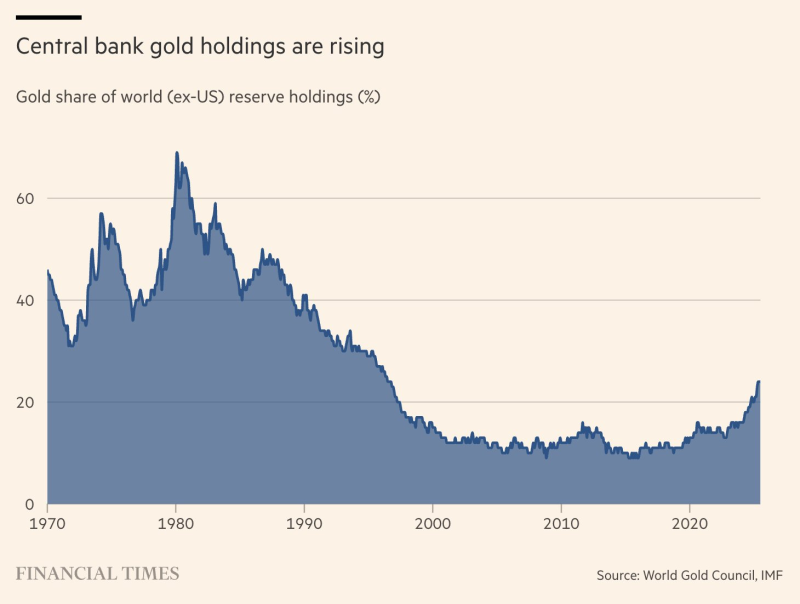Central banks worldwide are quietly reshaping their reserves, and gold is back at the center. For the first time this century, the yellow metal's share of global reserves has climbed to levels not seen in decades. What's driving this shift? A mix of inflation fears, geopolitical tension, and a growing distrust of traditional currency markets. Nations are hedging their bets, and gold is winning.
The Long View: Gold's Comeback Story
The chart tells a story of cycles. In the 1970s, during inflation chaos, gold made up over 60% of central bank reserves. Then came the long decline—through the '90s and 2000s, that figure dropped below 20% as governments piled into U.S. Treasuries and other paper assets. But since 2010, something changed. Gold started climbing again, steadily reclaiming lost ground. Today, it's back above 25% and rising—a level unseen in over twenty years.

Why Now?
Geopolitics matter. Tensions between the U.S., China, and Russia aren't cooling down, and countries are diversifying away from dollar dependence. Inflation isn't going away. Central banks see gold as a hedge when currencies lose purchasing power. De-dollarization is real. Emerging markets are leading the charge to reduce reliance on the greenback. And through it all, gold remains what it's always been: a store of value that doesn't rely on any government's promise.
What It Means
This isn't just a trend—it's a signal. Central banks are betting on gold because they see what's coming: more uncertainty, more volatility, more reasons to hold something solid. For anyone watching the markets, the message is clear. Gold isn't just surviving in the modern financial system. It's thriving.
And if central banks are stocking up, maybe it's worth asking: shouldn't you be paying attention too?
 Marina Lyubimova
Marina Lyubimova

 Marina Lyubimova
Marina Lyubimova


